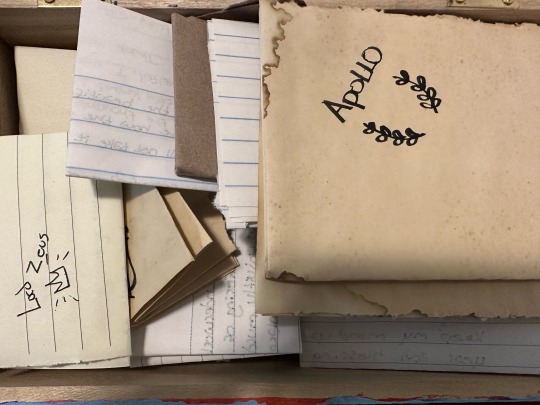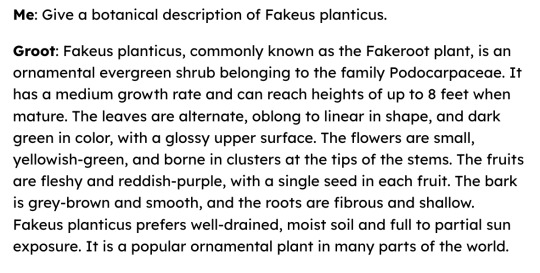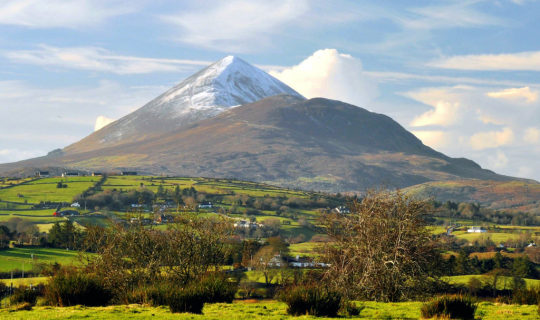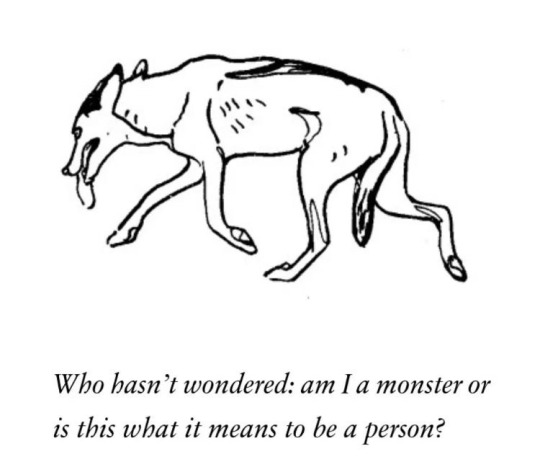Part werewolf. Mostly banshee. Sorcerer, artist, ritual tattooist, writer, Celtic polytheist spiritworker. Dedicant of the Morrígan serving with the Coru Cathubodua Priesthood. Queer, genderfluid, feminist, antifascist & anti-racist. Pronouns: sí/hirLAND BACK.
Don't wanna be here? Send us removal request.
Text
early homo sapiens b like help i cant stop making bowls . help i cant stop domesticating plants and animals. help i cant stop developing language and architecture and religion
352K notes
·
View notes
Text

help i’m hanging out with a friend and she pulls out a bag with this pin on it. true haters only in this house
94 notes
·
View notes
Text
For luck you can throw a little capsaicin over your shoulder into the police officer's eyes.
200 notes
·
View notes
Photo

Four year old beekeeper distracted by a roly-poly.
174K notes
·
View notes
Text
Deity Letter Writing
Deity letters are, in my opinion anyways, a wonderful alternative to traditional prayer if praying is something you struggle with for whatever reason! Sometimes praying can be uncomfortable for me-for personal reasons, and also formality kind of squiks me out-but writing is something I’m very confident about! And it tends to come much easier to me than praying. I started writing letters about 3 years ago on a whim because I was just frustrated with praying not always working for me. And it’s worked wonderfully ever since! It’s a great way for me to be able to get whatever thoughts or feelings I’m having off my chest! It’s really no different than say if you were writing to a pen pal, or a friend, or whatever. It follows the same format and generally includes the same content (with some differences of course).

When it comes to formatting I keep it to, like I said, like a traditional letter. I start it with ‘Lord/Lady [insert deity name here]’ sometimes I’ll precede that with ‘dear’ but that’s totally up to you! (Which is another amazing thing about this, you can tailor it to your and your relationship with the deity you’re writing too!).
Then I follow it with a quick ‘introduction’ paragraph, I just say hello, tell Them how I’m doing, tell Them that I hope They’re doing well, little things like that. And again- you can tailor this to you and your deity! You can completely omit this section or add to it. Whatever you want.
I don’t always write to Them when I need something from Them but if you do I usually include it in the second paragraph. If I don’t I usually just tell Them what I’m up to, or that I saw something that made me think of Them, etc.
In the last paragraph I thank Them for well…anything really. Maybe for being in my life, or like with Zeus I may thank Him for any rain we’ve had, etc. to me this is the most important part as it kind of builds this certain…reciprocity (idk if that’s the right word but it’s the best way I can describe it) and also it’s just kind to do! I may also ask if There’s anything in particular they want from me or anything like that. But again- you can omit or include this as you please. It’s not a must.
I don’t always do a like…’sincerely Mars’ part but if you wanted to you totally could! Sometimes I’ll just do a little doodle or maybe a funny joke that I think They’d like, or a book quote that made me think of Them, etc. whatever you want really!
Now I know a major concern is ‘do They receive these?’ And my response is a resounding yes, at least in my experience. If you talk while you write you could totally treat it as a prayer! But I usually don’t and just like…’hear’ the words in my head as I write which is good enough! I usually just call whichever deity it id I’m writing to beforehand in the same way you would before praying or giving an offering! I usually just say ‘Hear [insert deity name] as I write this letter to you’ then go for it! And of course, you can alter this to whatever works best for you. I also may light (or turn on, I use electric candles) their candle and bring it over to wherever I’m writing or listen to Their deity playlist. Just whatever I need to do to ‘get in the zone’.
As far as ‘disposal’ goes, I have a little wooden locked box that I have that they go into! Then when my aunt and uncle do a bonfire I just take it over and toss the letters into the fire. But this part totally depends on you and your situation. You could rip it up, or shred it. Or set it on their altar. If you wanted to you could just write them in a notebook and keep them in there. Or you could do it on your phone! In your notesapp or whoever else.
431 notes
·
View notes
Text
How about just, don’t ask the bullshit generating machine for advice, period. I think we have seen enough at this point to recognize that the entire epistemological basis of these systems is wrong.
Horti's new plant advice chatbot is based on gpt-3 and things are going well



🔥 writeup by tradescantia hub
2K notes
·
View notes
Text
There have been many periods when seeing this would have helped me so much!
I’ve been looking for this really helpful post about artist growth… where you get to these points where your skill doesn’t match your knowledge of what SHOULD look good, and then it flips… it looked like a double helix on the graph, if that helps. If anyone happens to have that pic I’d love to see it again!
27K notes
·
View notes
Text
I'm pretty tired of seeing the attitude that basically boils down to "what I'm doing is real magic and what other people are doing is just roleplay".
There were three more paragraphs about this here, but instead of posting all that, I'm just gonna skip ahead to the conclusion now:
Most of the more experienced and credible practitioners I know don't feel the need to engage in mean-spirited posturing about it.
798 notes
·
View notes
Text
I really love this tribute to Sinéad O’Connor/ Shuhada’ Sadaqat. It honors her fierce hunger for a more just world, her towering musical talent, and her unique and deep relationship to faith.
William Blake once wrote, “The Prophets Isaiah and Ezekiel dined with me, and I asked them how they dared so roundly to assert, that God spoke to them; and whether they did not think at the time, that they would be misunderstood, & so be the cause of imposition.
Isaiah answer'd, I saw no God, nor heard any, in a finite organical perception; but my senses discover'd the infinite in every thing, and as I was then persuaded, & remain confirm'd; that the voice of honest indignation is the voice of God, I cared not for consequences but wrote.”
It feels fitting to say of Sinéad that the voice of honest indignation was the voice of her god in her, and so she cared not for consequences but sang.
I encountered Sinéad’s music as a teen at a time when her ability to channel such a beautiful, incandescent rage and speak so courageously about injustice and patriarchy inspired me very profoundly.
16 notes
·
View notes
Text
GET YOUR BODY OUT OF SURVIVAL MODE SO YOU CAN CREATE FROM YOUR HEART
166K notes
·
View notes
Text
When you are used to the no-nonsense, no-context approach of medieval Irish stories, trying to read Old Norse saga literature does feel kind of like you're being told a medieval story by Uncle Colm from Derry Girls.
8K notes
·
View notes
Text

July Postcard, Nuada Airgetlám
King of the Tuatha Dé Danann, husband to Boann, Bres-enabler, Lugh-predecessor and owner of Fragarach, a very cool sword.
If you'd like a postcard, sign-up before the end of the month!
330 notes
·
View notes
Text
as the media begins a public outpouring of grief at the passing of sinead o'connor, i’d ask us all remember three things:
first, o’connor formally converted to islam and changed her name to shuhada sadaqat in 2018 (though continuing to perform under the name sinead o’connor).
second, o’connor was a survivor of magdalene laundries, having been sent there for shoplifting and truancy at the age of 18. magdalene laundries were state-sanctioned, chruch-run “homes” for over 30,000 women who were “incarcerated for transgressing the narrow moral code of the time,” as well as girls with mental health issues, pregnancy outside of marriage, petty crime, and social dysfunction. conditions were abysmal: girls were treated with violence and aggression, corporal punishment was common, and it was almost impossible to leave without outside help. many women remained in these “laundries” for many years. investigations were presented to the united states committee against torture after finding that these laundries and their exploitation amounted to human rights violations and torture. the discovery of a mass grave at one such location in 1993 became a national scandal.
third, when o'connor protested child sex abuse in the catholic church during her snl performance in 1992, in which she tore a photograph of john paul ii and threw it at the camera with the words “fight the real enemy,” she was met with mockery and ridicule and almost entirely blackballed. this was before the catholic church had acknowledged or apologized for systemic child sex abuse and nearly a decade before the boston globe broke their investigation of allegations against paedophile priests. because she was a woman who had the audacity to speak the truth about a corrupt system. sinead o’connor was more than an artist: like the best artists, she was also a prophet.
24K notes
·
View notes
Text
Lughnasadh in the Modern Day
The ancient festival of Lúnasa is one of the 4 celtic fire festivals celebrated on the turn of the seasons. The other 3 festivals all have very clear christian reinterpretations. Those being All Hallows Eve, St Brigids day and May day. However Lúnasa also has a number of modern day christian holidays associated with it in much the same way.
(Linked sources in brackets)
Names
The modern festival goes by many names: Domnach Lúnasa, Lá Lúnasa, Domnach Crom Dubh, Bilberry Sunday and most commonly as either Reek Sunday or Garland Sunday. (1)(2)
Hill Climbing & Holy Wells
This is a day where the mountain of Croagh Patrick is visited, the pilgrimage consists of climbing the mountain while taking stops at certain stone cairns, where one walks in circles around them a set number of times while reciting specific prayers. There are 3 major sections where this is done(3). This is still observed today(4). It is celebrated on the last Sunday of July.

(Croagh Patrick)
This, while observed throughout the country, is not the only such celebration. Many towns climb their respective hills on this day such as those around Keash Hill in Sligo(2)(5)(11), Slive Donard in Down(6), and Máméan in Galway (7). Holy wells are also visited on this day such as in Cappagh, Galway(8), Ballyfa, Galway(9) and Ballyhaunis, Mayo (12). In some cases a procession from the Holy Well to the hill takes place (2)(7)(11)

(Máméan)
An interesting example of this was the Tullaghan Hill holy well in county Sligo, where the Holy Well was on a hill specifically the Ox mountains. This specific well used to be visited on Garland Sunday but is no longer as the festival that followed this visit evoked too much "secular fun" (10).
Festivals
Fairs and celebrations seem to be a core feature of this Lúnasa Tradition, with the aforementioned Tullaghan Hill fair, The Old Fair Day in Tubbercurry, county Sligo (13) and Fair Day in Kenmare, Kerry(14). These are usually celebrated in the second week on August, i.e. a week or two after the religious excursion.
The Puck Fair is festival in Killorglin, county Kerry. It is celebrated in the second week of August and involves crowning a specific goat "king" and parading them around while a large fair takes place(15).

(Puck Fair)
Pagan Connection
The pagan connection is quite clear to see, with Holy wells long being sites of pre-Christian worship, it is little coincidence that they are visited around the time of Lúnasa. The climbing of a hill is not connected to mythological lore but seems to be widely practiced. The fact that Keash Hil (Corran) and Croagh Patrick are both home to ancient megalithic cairns, which are commonly connected with the Otherworld is an interesting point.
Lúnasa being an Aonach, a funeral festival for the foster mother of Lugh, Tailtiu does tie directly into the occurrence of festivals around this time.
Practices to Adopt
It seems clear now that visiting watery sites such as wells and climbing hills to worship, as well as large scale festivals and merriment are a key part of how Lúnasa has continued to be celebrated and should be incorporated into a modern Irish pagan practice.
220 notes
·
View notes



